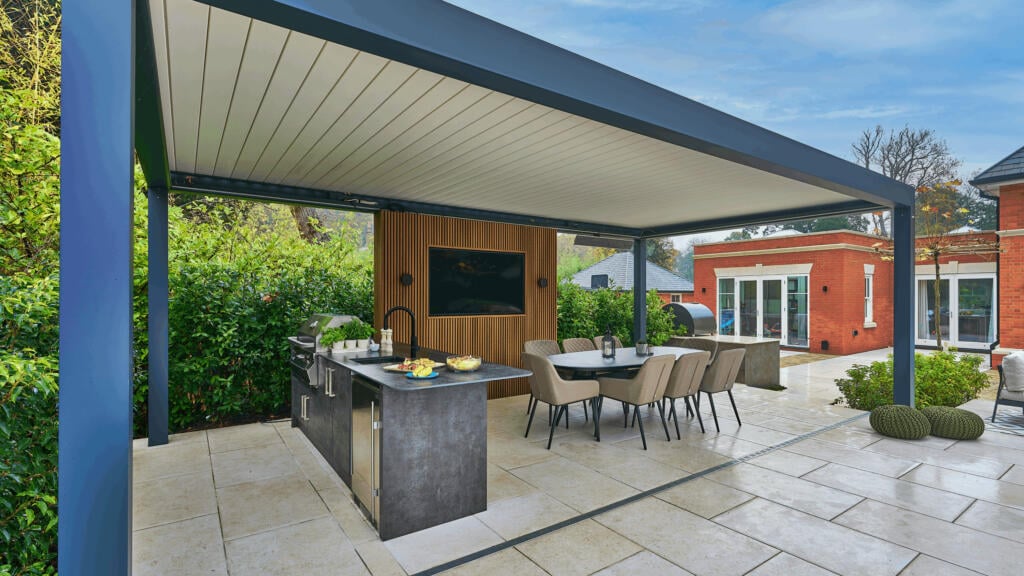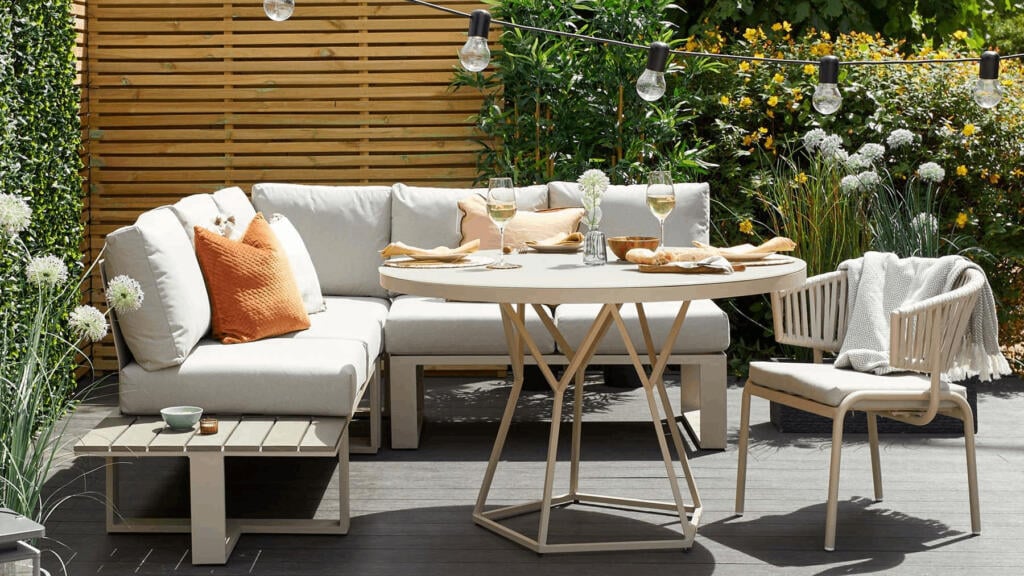
No-dig gardening: your next project?
Rosanna Spence
They may look very similar, but topsoil and compost have slightly different applications in the garden.
If you’ve decided to take on a new planting project, whether that’s building some raised beds, filling your hanging baskets, or improving your garden borders, then you’ll need some material. But when it comes to topsoil vs compost, which should you be using?
You may have had less than successful flowerbeds or vegetable patches in the past. The reason behind this could be what you’ve actually been planting into.
Though topsoil and compost look similar at first glance, they’re really quite different. We explain the purpose of each one, so you’ll know which to buy and how to use it in your garden.
If you’ve decided to take on a new planting project, whether that’s building some raised beds, filling your hanging baskets, or improving your garden borders, then you’ll need some material. But when it comes to topsoil vs compost, which should you be using?
You may have had less than successful flowerbeds or vegetable patches in the past. The reason behind this could be what you’ve actually been planting into.
Though topsoil and compost look similar at first glance, they’re really quite different. We explain the purpose of each one, so you’ll know which to buy and how to use it in your garden.
 Credit: Shutterstock / Krasula
Credit: Shutterstock / KrasulaTo the novice gardener, topsoil and compost appear to be similar in appearance and texture, but they have slightly different roles in your planting projects.
“As the name suggests, topsoil is the top layer of natural soil and is where the plant roots gain most of their nutrients and water from,” Charles Carr, head of Hillier Garden Centres, told us. “Compost, on the other hand, is made from a blend of composted organic matter to create the right structure to grow plants in pots.”
Carr explains that when it comes to knowing which one to use in your garden, it’s important to understand their properties.
 Credit: Zoe Schaeffer on Unsplash
Credit: Zoe Schaeffer on UnsplashTopsoil has many uses in the garden. It essentially creates a base made from natural materials to plant grass seed into or lay turf on, form flower beds with, and fill plant containers. If your garden is paved, or doesn’t have areas of existing earth, topsoil can be used to transform these spaces into patches that can be planted into.
But topsoil can also be added to existing earthy areas that need a little health boost, before adding compost and plants.
“If your soil has a thin, or depleted topsoil, then this can be enriched with the addition of more topsoil, which will add nutrients and improve water storage,” Carr adds. “Soil improvements can be done with other soil conditioners, such as homemade compost, spent mushroom compost, well-rotted manure or a mulch of bark, which will be drawn into the soil.”
So, topsoil can be used to cover ground, improve poor soil and create new areas or containers to plant into.
To avoid later problems, it is best to check the topsoil before buying it, warns the RHS. Look out for high stone content, thick fibrous roots, weeds and contaminants such as glass and brick, it says.
“Imported topsoil can sometimes introduce invasive plants, such as Japanese knotweed and couch grass, to the garden,” the RHS adds. “Inspect the soil for signs of weed roots or shoots. Weed roots are often white and fleshy, sometimes with a brown covering, unlike the brown, dry, fibrous roots of trees and shrubs.”
 Credit: Eva Bronzini
Credit: Eva BronziniIf topsoil is the main ‘bulk’ of planting material, then you can think of compost as an additional nutritional boost for plants. It can also add structure to existing soil, giving plant roots more stability as they grow.
“Compost can be mixed with an amount of topsoil for use in pots to increase water retention and give plants a valuable boost of nutrients,” Carr agrees.
This is achieved thanks to the organic composition within compost. Travis Perkins explains how this works on its website: “When compost is added to soil, the organic material is eaten by microorganisms within the soil. As the microorganisms break the compost down, this produces a dark and spongy material called humus. This material contains carbon, and is rich in fibre, and additional nutrients such as potassium, phosphorus and nitrogen. These all help to promote plant growth and protect plants from disease and help with their reproduction.”
There may be variations in the types of compost available. Usually, the product’s packaging will have instructions on when and how to apply it.
This compost is made using organic waste products, including grass clippings and raw food waste (excluding meat and dairy products, and whole eggs, although eggshells are fine). These materials break down after around a year, then can be used to boost growth in the garden, adding a layer to ornamental and edible plants.
Though peat was widely used in compost due to its ability to hold oxygen and moisture, the government is looking to ban peat-based compost. Though initially scheduled for the end of 2024, at the time of writing this had been extended until 2030 for professional growing products, as reported by The Wildlife Trusts. Some peat-containing products will however be banned from the shelves in 2027.
The commercial ban is planned due to the issues with harvesting peat – not only does it lead to the loss of an important wildlife habitat, but it releases huge amounts of carbon during the process. This is, of course, a concern for environmental and climate issues.
This has led to peat-free compost being widely available to buy. Its production has improved so that it better retains moisture. Travis Perkins says this means plants that like water grow well in it.
“Peat-free compost is designed to grow plants in pots and baskets with nutrient-rich growing materials, good water retention and drainage,” Carr notes. “However, when growing in pots, it’s important to remember that compost can dry rapidly on sunny days, and checking water levels carefully will prevent drying.”
Travis Perkins adds that if you need more drainage for plants that don’t need as much moisture, adding sharp sand and small stone gravel can help.
Loam soil is one of the best types of soils to grow plants in, being particularly good for vegetables, according to Travis Perkins.
“Loam is made up of different minerals with some organic matter,” the company says. “This rich mix of silt, sand and clay soil types, brings a good mixture of materials and nutrients to help with consistent growth.”
If you’re still not sure which compost is right for your planting project, opting for a multipurpose mix will likely still provide decent results. In most conditions, multipurpose compost will provide a healthy basis of soil nutrients that will help plants to grow. It’s particularly useful for smaller containers, garden beds and hanging baskets.
Mixing topsoil and your chosen compost together will provide the best growing conditions for your plants. But the ratio of these two materials – along with sand, grit or stones added for drainage – will depend on what’s being planted and whether it’s in a hanging basket, raised bed or in the ground. There’s no one-size-fits–all solution, so once you know what you’ll be planting, it’s best to research optimal ratios for each type of plant.
 Credit: Gabriel Jimenez on Unsplash
Credit: Gabriel Jimenez on UnsplashIdentifying your soil type
How well do you know your soil? If you’re hoping to start new planting projects in existing soil, it helps to understand the general soil type. This is usually done by looking at the way soil feels between your fingers, and how it responds to being handled.
“Pick up a handful and squeeze it together,” gardener Sarah Raven suggests on her blog. “Sand feels gritty, and the grains do not stick together when squeezed. Loam feels velvety or flour-like when dry and forms a weak ball shape when wet, which crumbles apart when dry. Clay feels sticky but goes smooth when rubbed. Chalk will have large lumps in it and be hard to mould.”
Raven advises gardeners to remember the golden rule of ‘right plant, right place’ in order for your plants to thrive. “All soil types have their good points and can be improved. Even the best loam soils will benefit from additional organic matter [such as compost].”

Written by Rosanna Spence she/her
Published: Updated:
Rosanna Spence has been a journalist for nearly 10 years, reporting on a huge array of topics – from microwaves to cocktails, sustainable buildings, the Caribbean islands and beyond. She’s interviewed chefs at the helm of Michelin-starred restaurants and chatted to countless CEOs about their businesses, as well as created travel guides for experienced travellers seeking life-changing adventures. Throughout her career, she has created content for Business Traveller, i-escape.com, Pub & Bar, BRITA, Dine Out and many more leading titles and brands.

Rosanna Spence

Rosanna Spence

Camilla Sharman

Rosanna Spence